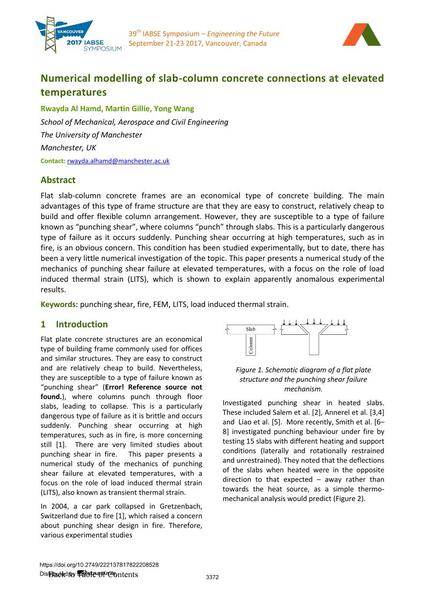Numerical modelling of slab-column concrete connections at elevated temperatures

|
|
|||||||||||
Détails bibliographiques
| Auteur(s): |
Rwayda Al Hamd
(School of Mechanical, Aerospace and Civil Engineering The University of Manchester)
Martin Gillie (School of Mechanical, Aerospace and Civil Engineering The University of Manchester) Yong Wang (School of Mechanical, Aerospace and Civil Engineering The University of Manchester) |
||||
|---|---|---|---|---|---|
| Médium: | papier de conférence | ||||
| Langue(s): | anglais | ||||
| Conférence: | IABSE Symposium: Engineering the Future, Vancouver, Canada, 21-23 September 2017 | ||||
| Publié dans: | IABSE Symposium Vancouver 2017 | ||||
|
|||||
| Page(s): | 3372-3376 | ||||
| Nombre total de pages (du PDF): | 5 | ||||
| Année: | 2017 | ||||
| DOI: | 10.2749/222137817822208528 | ||||
| Abstrait: |
Flat slab-column concrete frames are an economical type of concrete building. The main advantages of this type of frame structure are that they are easy to construct, relatively cheap to build and offer flexible column arrangement. However, they are susceptible to a type of failure known as “punching shear”, where columns “punch” through slabs. This is a particularly dangerous type of failure as it occurs suddenly. Punching shear occurring at high temperatures, such as in fire, is an obvious concern. This condition has been studied experimentally, but to date, there has been a very little numerical investigation of the topic. This paper presents a numerical study of the mechanics of punching shear failure at elevated temperatures, with a focus on the role of load induced thermal strain (LITS), which is shown to explain apparently anomalous experimental results. |
||||
